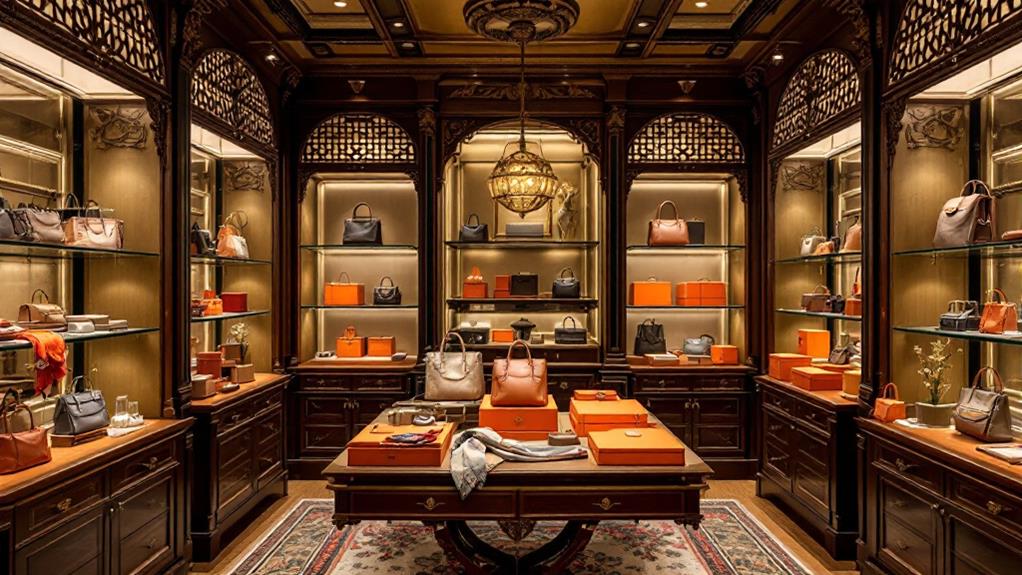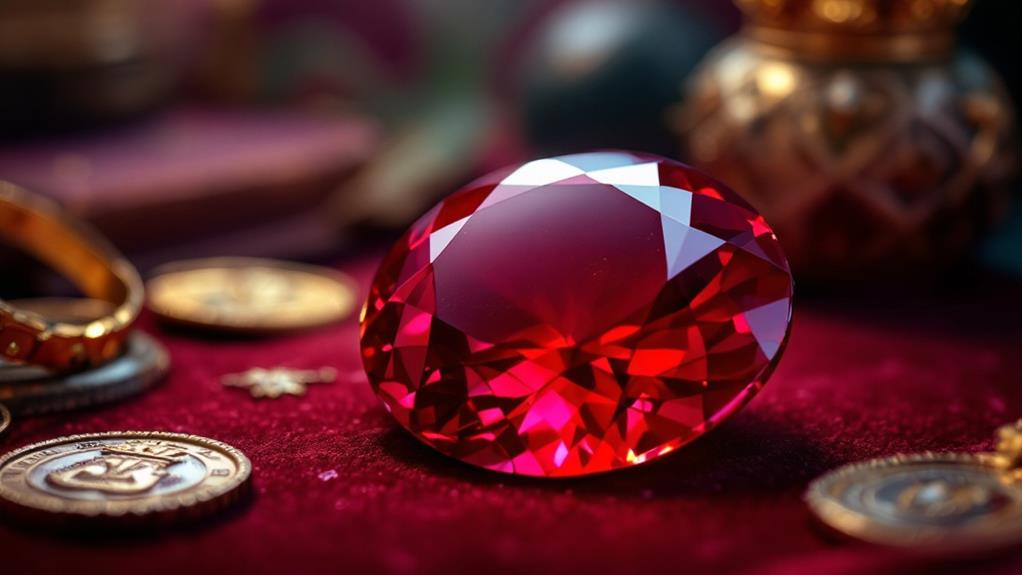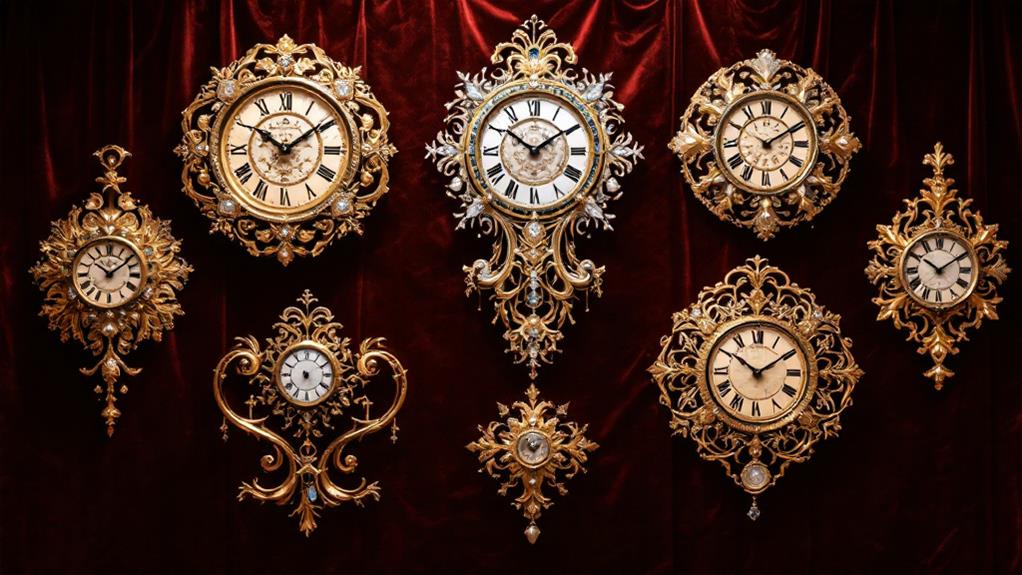The Ten Most Expensive Paintings in History and Their Stories
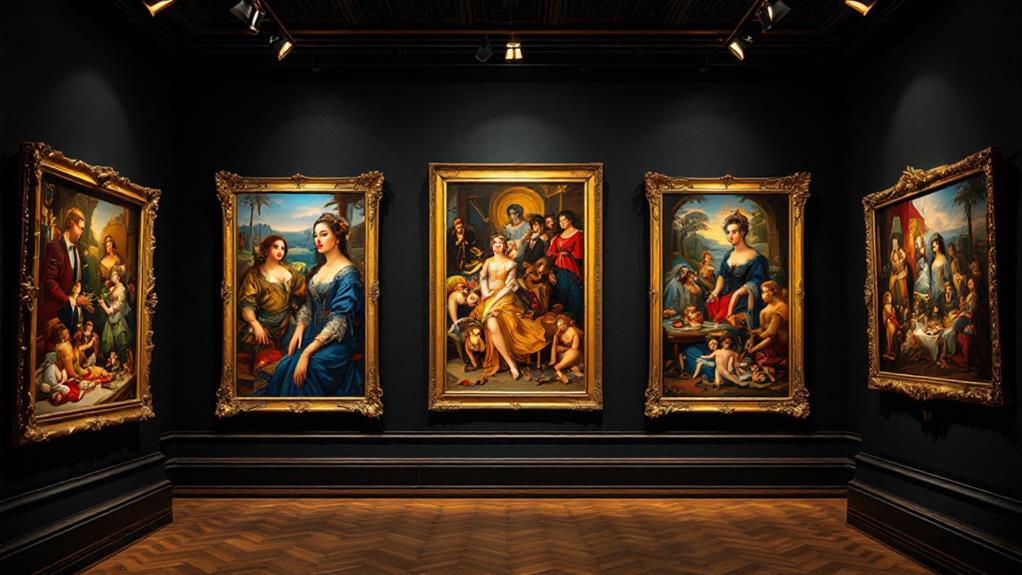
You're about to uncover the fascinating stories behind the world's priciest paintings. Leonardo da Vinci's "Salvator Mundi" leads with an astonishing $450.3 million, mired in authenticity debates. Willem de Kooning's "Interchange" highlights Abstract Expressionism's allure at $300 million. Paul Cézanne's "The Card Players," elusive in exact price, reached up to $300 million, showcasing artistic evolution. Paul Gauguin's "Nafea Faa Ipoipo?" fetched $210 million, echoing Tahitian culture. Jackson Pollock's dynamic "Number 17A" at $200 million symbolizes post-war innovation. Andy Warhol's "Shot Sage Blue Marilyn" and Picasso's "Les Femmes d'Alger (Version O)" intrigue with cultural commentary and avant-garde techniques. Uncover more about these masterpieces' vivid legacies and market intrigue.
Salvator Mundi's Controversial History
Amidst the world of high-stakes art auctions, the painting Salvator Mundi has captivated and divided art enthusiasts and experts alike. This masterpiece, attributed to Leonardo da Vinci, fetched an astounding $450.3 million at Christie's in November 2017, setting a record as the most expensive painting ever sold at auction. Yet, its authenticity remains a contentious issue. Critics question if this painting is truly da Vinci's, given the extensive restoration it underwent. The restoration has sparked debates about how much of the original work remains versus the modern interventions applied to it.
After its auction, Salvator Mundi found an unexpected home linked to Saudi Crown Prince Mohammed bin Salman. Reports suggest the painting resides on his private yacht or perhaps in a museum within Saudi Arabia. Before reaching this prestigious status, the painting's provenance included numerous ownership changes. It was nearly lost to obscurity until Swiss businessman Rudolf Staechelin acquired it in the 1970s. The painting's expedition from obscurity to record-breaking auction highlights the complexities of art ownership and the ongoing debates about its true origin and value.
De Kooning's Abstract Masterpiece
In the domain of high-stakes art sales, Willem de Kooning's Interchange stands as a proof to the allure and significance of Abstract Expressionism. Painted in 1955, this masterpiece sold for an astonishing $300 million in September 2015, marking it as one of the most expensive artworks ever sold. De Kooning's shift from figurative to abstract expressionism is clearly evident in Interchange, celebrated for its lively colors and dynamic composition.
You'll notice how the pink center, symbolizing a reclining woman, highlights de Kooning's groundbreaking approach to form and texture. This technique has left a lasting impact on modern art, reflecting the artist's period of intense creativity and experimentation. The painting's acquisition by billionaire Kenneth C. Griffin from the David Geffen Foundation underscores the growing interest in high-value art among the world's wealthiest collectors.
De Kooning, a critical figure in the Abstract Expressionist movement, captured the essence of his artistic evolution in Interchange. The painting not only represents his personal quest but also epitomizes the transformative power of Abstract Expressionism within the broader landscape of modern art. This masterpiece continues to captivate and inspire art enthusiasts globally.
Cezanne's Card Players Legacy
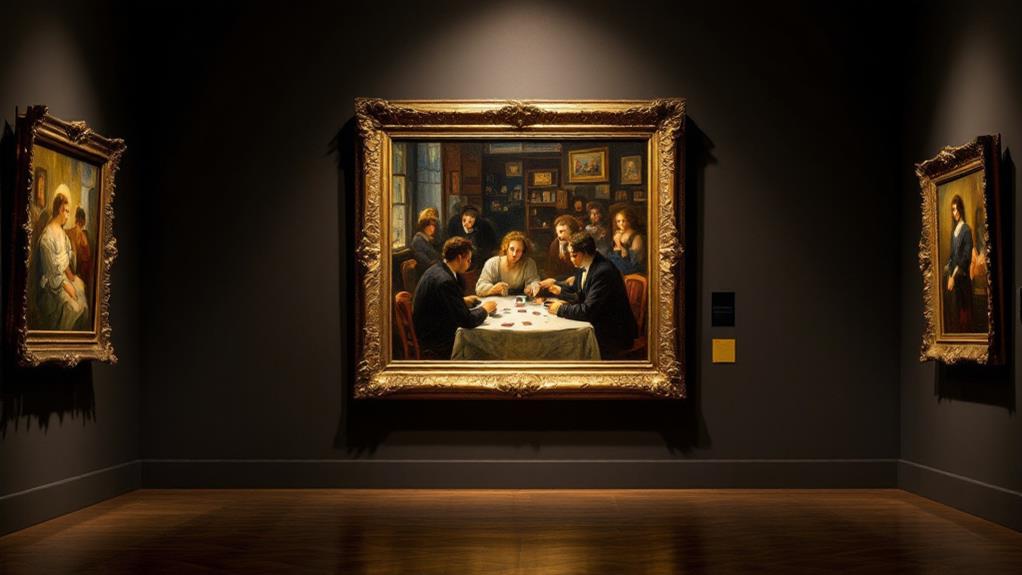
You'll find that Paul Cézanne's The Card Players holds a remarkable place in art history, not just for its hefty price tag but for its profound impact on the Post-Impressionist movement. This iconic piece, part of a series of five works, captures laborers engrossed in a card game, showcasing Cézanne's groundbreaking approach to composition and form. The Royal Family of Qatar purchased the painting in 2011 for a staggering $250 to $300 million, making it one of the most expensive paintings ever sold.
The Card Players underscores the increasing value of post-impressionist works in the contemporary art market, highlighting the growing interest among collectors in Cézanne's seminal contributions to modern art. Painted between 1890 and 1895, this series marked a crucial shift in Cézanne's style, moving from lively colors to more subdued tones and themes. His exploration of human interaction and social themes is evident, positioning the painting as a critical piece in the evolution of both art and cultural history. As you explore Cézanne's legacy, you'll appreciate how The Card Players continues to influence and inspire the modern art world today.
Gauguin's Tahitian Inspiration
As you move from Cezanne's profound influence on the Post-Impressionist movement, you'll uncover another artist who left an indelible mark: Paul Gauguin. His fascination with Tahitian culture birthed the masterpiece Nafea Faa Ipoipo? (When Will You Marry?), a painting sold for an astounding $210 million in 2014. This artwork not only ranks among the most expensive paintings ever sold but also perfectly encapsulates Gauguin's unique artistic vision.
Created during Gauguin's initial voyage to Tahiti in 1891, the painting features two Tahitian women, embodying themes of love and marriage readiness. Through lively colors and simplified forms, Gauguin departed from European conventions, embracing Polynesian aesthetics. His time in Tahiti left a profound impact on his style, leading to a series of works that celebrated the beauty of the island and its indigenous culture, cementing his place as a crucial figure in post-impressionism.
The painting's sale, facilitated by Swiss businessman Rudolf Staechelin to a Qatari buyer, underscores the growing interest in high-value art among Gulf state collectors. Gauguin's Tahitian inspiration continues to captivate and influence art lovers worldwide.
Pollock's Drip Painting Revolution

Artistic innovation defines Jackson Pollock's contribution to abstract expressionism, with his revolutionary drip painting technique at the forefront. Pollock's "Number 17A," sold for an astounding $200 million in 2015, showcases this groundbreaking method. You can imagine him pouring and dripping paint onto a canvas laid flat on the ground, allowing him to engage with his work from every angle. This approach creates a powerful sense of movement and spontaneity, capturing the raw energy that defines abstract expressionism.
Pollock's work, especially "Number 17A," is all about emotional expression. The intricate layers of color and texture invite you to step into the painting, making the experience dynamic and engaging. His technique emphasizes the physical act of painting, transforming it into a performance that connects with the post-World War II American art movement.
The record-breaking sale of "Number 17A" not only highlights Pollock's artistry but also underscores the growing prominence of contemporary art in the global market. As you investigate his work, you see a fusion of spontaneity and control, with each drip contributing to a complex tapestry of emotions. Pollock's legacy continues to inspire, pushing the boundaries of artistic expression.
Warhol's Iconic Marilyn Series
Fascination with celebrity and culture converges in Andy Warhol's iconic Marilyn series, a tribute to the profound impact of fame in art. Warhol's "Shot Sage Blue Marilyn," a standout from this series, embodies this convergence. In 2022, it sold for a staggering $195 million at Christie's, cementing its place among the most expensive paintings in history. This series of silk-screen portraits, created in the early 1960s, captures Marilyn Monroe's enduring status as a cultural icon.
Warhol's technique involved replicating a publicity photo of Monroe from the 1953 film "Niagara," transforming it into lively color combinations. His approach wasn't just about the image; it was a commentary on consumerism and the way fame permeates popular culture. The Marilyn series exemplifies Warhol's role in the Pop Art movement, which challenged traditional art by embracing everyday subjects and mass media.
You can see Warhol's fascination with Monroe in each piece, reflecting her legendary allure and tragic life. Through the series, Warhol didn't just immortalize Monroe; he expanded the conversation about celebrity's pervasive influence in art. Each portrait remains a powerful reminder of the intersection between art, fame, and consumerism.
Picasso's Algerian Influence
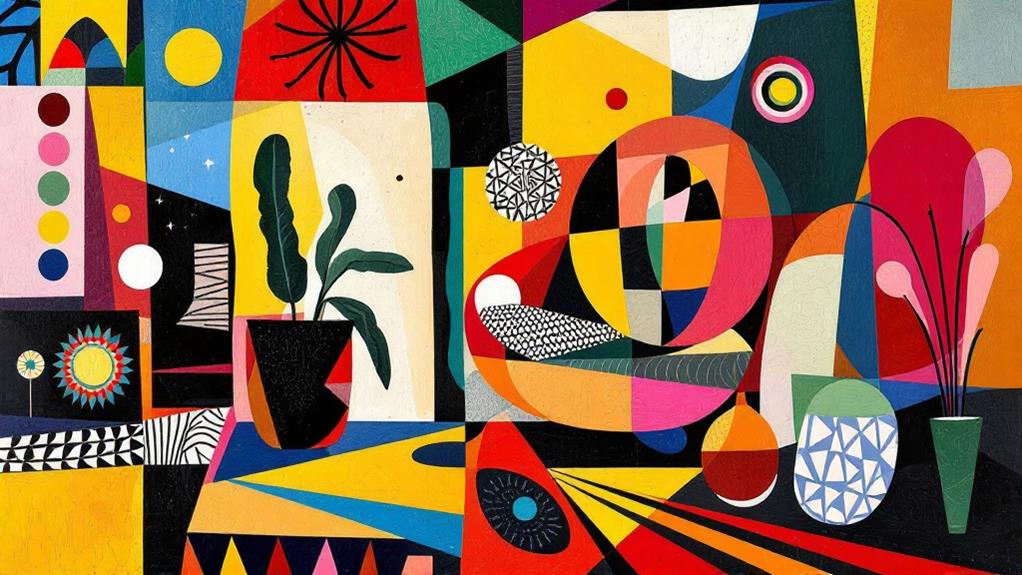
Inspired by the work of Eugène Delacroix, Pablo Picasso's "Les Femmes d'Alger (Version O)" stands as a tribute to his enduring fascination with Algerian culture and the female form. Created in 1955, this masterpiece highlights Picasso's pioneering use of cubism and lively color, elements that became defining features of his later work. You'll notice how Picasso captures the essence of femininity and sexuality, solidifying his place as a crucial figure in modern art.
In 2015, "Les Femmes d'Alger (Version O)" made headlines when it was sold at auction for an astounding $179.4 million. This sale not only set a record for Picasso but also underscored the increasing trend of high-value contemporary art in the market. The painting's staggering price reflects its significance in the art world and Picasso's lasting influence.
As you investigate the series, you'll find that Picasso's fascination with Algerian culture permeates each piece, paying homage to Delacroix while simultaneously pushing the boundaries of artistic expression. The painting remains a tribute to Picasso's genius and his ability to transform traditional themes into groundbreaking works of art.

